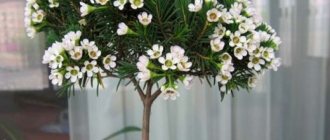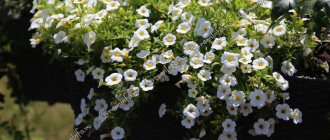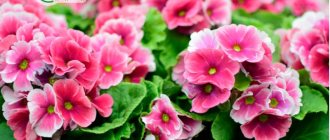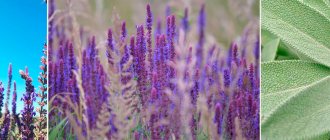What does Sansevieria cylindrical look like?
Sansevieria cylindrical forms long tube-shaped leaves up to 2 cm in diameter, collected in a rosette from the ground itself. Its erect leaf blades up to 1.5 m high are covered with a waxy coating, giving them a glossy shine. The leaves are smooth to the touch. There is a groove along the entire length in the center of each leaf. There is a point at the tip of the leaf. If the tip dries out, a thorn forms at this place. The growth of this species of bush occurs in breadth - the plant quickly grows underground side shoots, which is why in nature it can form quite dense thickets. Sansevieria is native to South Africa. This plant has been used in cultivation for about 500 years.
Although Sansevieria is considered an ornamental foliage plant, it can also bloom. During this period, a tall peduncle measuring about half a meter is formed on the bush, the color of which depends on the variety and includes different shades of green, pink and beige. On it are inflorescences in the form of spikelets. The tube-shaped flowers are white with pink tips of the petals.
Rules for choosing a plant
As a rule, a specific species or variety of sansevieria is chosen based solely on its appearance. This is due to the general unpretentiousness of the plants - the rules for caring for its varietal specimens are practically the same. But even so, in the store you should immediately assess the health of the bush, and also carefully inspect it for the presence of pests.
Botanical description of the cylinder
Cylindrical Sansevieria, or cylinder (lat. Sansevieria cylindrica) is a perennial stemless herbaceous plant of the Asparagaceae family, a species of the genus Sansevieria. The plant is also called Cylindrica. Sansevieria belongs to the succulent family, as a plant capable of storing water in its tissues.
There are 69 varieties in the genus, of which about ten species are suitable for indoor planting. Popular varieties include: Laurenti, White Sansevieria, Futura, Robusta and Cylindrica. We have heard such names as: mother-in-law's tongue, cuckoo's tail or the devil's tongue. Outside our country: snake plant, leopard lily, snake skin, African hemp.
This hardy plant has fully deserved the title of indestructible. The ancestry of Sansevieria cylindrica is rooted in the tropical forests of South Africa (Angola, Zambia and Zimbabwe). They can also be found growing wild in Indonesia, India, and North America. In the 14th century, the plant was adapted for indoor cultivation.
Cylindrika is distinguished by the fact that dense leaves grow directly from the ground, from the roots , in the form of twisted tubes (“cylinders”) of dark green shades, with a deep longitudinal depression and yellow strokes on the surface. The leaves are arranged vertically, slightly deflected, and when planted in a rosette, they resemble tentacles. The edges of the foliage are intact, but the tips are pointed and often the dangerous ends are covered to avoid injury. Every year two or three new shoots are added to the bush.
There are several varieties of Cylinders: Spaghetti, Mikado, Spike, and Twister. For example, Twister leaves are very flexible and are often braided.
Caring for Sansevieria cylindrical at home
Due to its unpretentiousness, Sansevieria is considered one of the plants suitable for both novice gardeners and people who do not have enough time to constantly care for flowers. The cylindrical view is no exception. But in order for such a plant to successfully decorate an apartment, its basic requirements must be met.
Lighting
Being a common office flower, Sansevieria can grow even in the presence of electric light, but at home it is still recommended to find a brighter corner. Cylindrica prefers scattered rays.
Temperature
Sansevieria cylindrical is not capricious and can grow actively in a fairly wide temperature range - in the warm season in the room with it it can be from 12 to 25 degrees. The plant does not like intense heat. In winter, it is recommended to move the bush to a cooler place - about 15 degrees. The lower threshold for growing such a flower is considered to be 5 degrees - such a cold snap can have a very negative impact on its health.
Watering
You don’t have to water the cylindrical sansevieria often - its thick foliage makes it very drought-resistant. In summer, the soil in the pot is usually moistened only once a week, and in winter - a couple of times a month. But, although the bush is able to survive a short drought, it is still not worth letting the soil clod dry out completely.
Humidity level
High humidity will have a beneficial effect on the health of sansevieria, but you should not spray its foliage. Drops of water can accumulate in the axils of its leaves, leading to their rotting. Instead, you can install an open container with water at the same time as the plant. It is recommended to periodically clean the foliage from dust with a damp cloth.
Selection of capacity
Sansevieria cylindrical. Planting and care.
Like other house plants, Sansevieria cylindrical can only develop well in a pot that is suitable for its size. The material of the landing tank does not play a special role. This flower can grow well in both a plastic and ceramic pot. The main condition for its use is the presence of drainage holes at the bottom - they will protect the bush from accidental overflow and will not allow excess moisture to accumulate and lead to rotting of the roots. A layer of drainage material will help enhance the protective effect.
The root system of Sansevieria grows not in depth, but in width, so low containers are usually selected for the flower. The dimensions of such a bowl are calculated by adding only a little to the diameter of the soil ball - an excessively voluminous pot is not needed. In an inappropriately spacious container, the bush will not bloom until its roots cover the entire volume of soil provided to it. In addition, excess soil increases the risk of the bush becoming waterlogged.
The soil
Sansevieria requires neutral or slightly acidic soil. For such a plant, you can use universal soil for growing succulents. If you prepare the substrate yourself, you can take part of leaf soil and coarse sand and mix them with double part of turf and half part of humus. Any substrate must be disinfected before use. To do this, it is calcined or spilled with a solution of potassium permanganate.
Feeding
The annual growth of the cylinder is small, so such a flower does not need a large amount of nutrients. But you shouldn’t completely deprive him of feeding. Nutrient formulations for succulents are well suited for Sansevieria. You can fertilize the plant with the usual mineral composition for indoor flowers, but its dosage must be reduced by 2 times. The amount of fertilizing also depends on the freshness of the soil in the pot. If the flower is regularly replanted, renewing part of the substrate, it does not need to be fed.
Transfer
Young sansevieria need annual transplants; this procedure is usually carried out in the spring. Bushes 3 years and older are moved to new pots only once every 3 years.
Trimming
The shape of the cylindrical bush does not require formative pruning, but if its leaves have been damaged or dried out, they should be cut off with a sharp and clean tool.
Bloom
Although Sansevieria cylindrical is capable of blooming regularly, forming a fairly long peduncle, its white inflorescences are not highly decorative. The tubular flowers open at the end of the day, emitting a faint scent of vanilla. Typically, the period of their appearance occurs in the spring and lasts about a couple of weeks. After the raceme fades, the peduncle dries out and the plant itself goes into a dormant state.
Landing rules
Cylindrical Sansevieria will grow well even in the depths of the room, so there is no need to select its place of “residence” based on the cardinal directions and room illumination. However, if the variety has brightly colored leaves, or if the owner wants to achieve flowering, it is better to place the pots in places with good access to light. It is better to place the plant not on the floor, but at least on small stands. You can place a decorative bush on a table or chest of drawers. The culture feels good at any living temperature. To make it bloom, you can try to temporarily remove it into a colder space, but the result of such a procedure is not one hundred percent.
It is allowed to replant the plant at the moment when it is actively developing, and it is better to do this in the spring. Young plants should be stirred every year and a half, and adults - once every couple of years. The soil should be light and loose, not containing peat, and having a slightly acidic or neutral reaction. The optimal soil can be formed from turf, leaf soil, and sand. Some experts also add a little humus . Even such modern materials as hydroponics, inert soil or rocky decorative soil are suitable.
Reproduction methods
You can get a new sansevieria using different methods. Seeds of a plant or parts of it - for example, cuttings - are suitable for this. You can also divide an adult, overgrown bush into several smaller ones. For propagation by leaf cuttings, large leaves are cut off at the root and divided into pieces 5-10 cm in size. They should be rooted in a light substrate, buried by about 2 cm and after drying the cut.
Difficulties in growing
Compliance with simple conditions for growing sansevieria and periodic inspections of the plant will help insure its owner against problems with the decorativeness of the bush and its health. You can judge the reasons for the difficulties by the appearance of the flower.
- Falling buds and drying leaves means there is not enough moisture, both in the soil and in the air. Most often, the cause of such problems is systematically poor watering, so the plant care schedule should be reconsidered.
- Pale foliage – leaves may turn pale if the bush is kept in too dark a place. If it is not possible to place it closer to the windows, you can use additional lighting lamps.
- Drying of the tips of the leaves - the tips of the leaf plates and cylinders begin to dry out if the temperature in the room is too high for a long time. During the heat, you can move the flower pot to a cooler place.
- Falling of the lower leaves - if the leaves begin to peel off, it is possible that too cold water is used for watering it.
Where to put
— Lighting . In shaded places, the plant slows down its growth; in deep shade, growth stops, but the plant itself survives safely. When changing location, plants undergo an adaptation period - the plant is moved gradually, allowing it to get used to the new conditions before determining its final location.
- Temperature. Sansevieria is undemanding to temperature, but responds well to heat. If watering is limited, it can withstand low temperatures, even frost, but for a short time. In summer in temperate latitudes it can be planted in open ground.
- Humidity . It grows well in dry air, but also likes periodic spraying with lukewarm water and wiping the leaves with a damp sponge or cloth.
Diseases and pests
Of the flower pests on Sansevieria, the most commonly seen pest is the spider mite. It feeds on plant sap and is easily recognized by its characteristic web. Proper maintenance, as well as regular wiping of the foliage with water, will help protect the bush from ticks. To enhance the effect, you can dissolve a little soap in it.
Sansevieria naturally has good immunity and, subject to growing conditions, practically does not get sick. The root of problems with a flower should first of all be sought in non-compliance with agricultural technology. For example, due to waterlogging, the plant may begin to rot.
Photo
In the photo below you can see what Sansevieria cylindrica looks like and what leaves it has:
And this is a photo of how the cylinder blooms:
Nowadays, when every minute counts, but you still want something homey, cozy and beautiful, Sansevieria can settle on your windowsill. There is probably no more unpretentious plant that will not require a lot of attention and time from you to care for itself. Before choosing a variety, you should carefully familiarize yourself with such types of this beauty as Velvet Touch, Hanny, Laurenti, Moonshine and Three-Stripe.
Varieties of Sansevieria cylindrical
The most popular shapes and types of cylinders are:
- Bonselensis - distinguished by thick, shortened leaves.
- Mikado is a half-meter tall variety with fleshy foliage decorated with transverse stripes.
- Spaghetti (or Velvet) - has cone-shaped leaves, the lower part of which has a velvety surface.
- Skyline - forms a spreading rosette of glossy foliage.
- Twister is a sansiveria with leaves woven into a braid.
Useful properties of Sansevieria cylindrica
Sansevieria contains many useful substances that allow these plants to be used in folk medicine. For example, their leaves contain saponins that can help with constipation, and also have an anti-inflammatory, expectorant and choleretic effect. But such drugs are contraindicated for pregnant women - even a small amount of raw materials can provoke uterine spasms.
Sansevieria can be beneficial without ingestion. The fleshy leaves of the plant perfectly purify the air and also produce a lot of oxygen. It is believed that Sansevieria is able to “cope” even with harmful electromagnetic radiation from various equipment.
Similar plants
- Some types of aloe.
- Gasteria.
- Agave.
- Haworthia.
Sansevieria leaves absorb formaldehyde, which means they also serve as an air purifier . Like aloe, cut pieces of leaves can be applied to wounds and burns.
Important! The plant should not be accessible to children and animals, as eating the leaves can lead to poisoning.
If you adhere to proper regular care, the appearance of Sansevieria cylindrica will delight the eye with dense, shiny leaves with variegated colors, decorating any interior.
If you find an error, please select a piece of text and press Ctrl+Enter.
Sansevieria and folk signs
One of the popular names of the plant - “mother-in-law's tongue” - is associated with the shape of its long leaves, pointed at the top. But because of it, it is sometimes believed that Sansevieria can contribute to an increase in the number of family quarrels. Other beliefs attribute opposite qualities to the flower, as well as the ability to establish a home stop. The sword-shaped foliage of the plant is considered to protect the home from ill-wishers.
Decorative foliage plants Indoor plants











